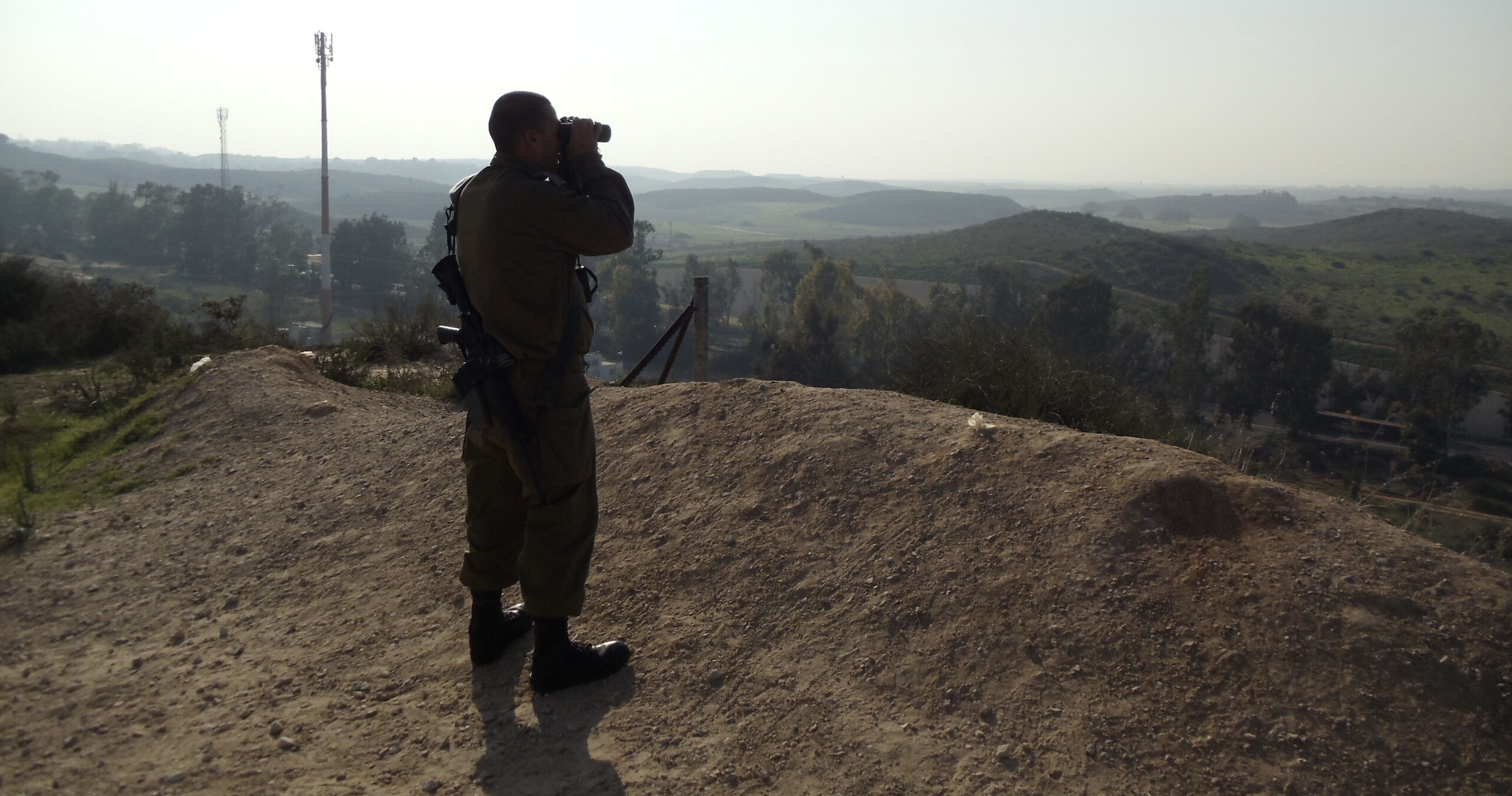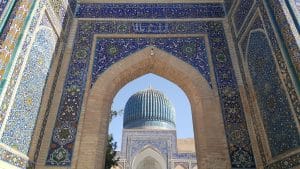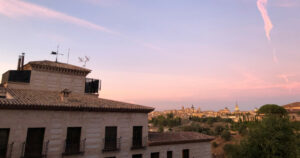I have no ancestral/familial ties or anything like that with Israel or Palestine personally. But I certainly have a unique perspective: very few people are fortunate enough to have been part of a Canadian delegation and thus to have spent 10 days traveling through almost the entire region, meeting many diverse leaders and learning about the conflict on the ground in a rather singular way.
I hesitated to even write this, since it’s such a polarizing topic and we don’t talk politics at Flytrippers.
(Except of course about all the impacts politics has on travel, so if you have plans to travel to Israel or Palestine, refer to our article on Maui after the fires or India after the diplomatic conflict while waiting for one that’s going to be more specific to this situation… but in 1 sentence, it’s still the same thing: relax, breathe, and wait to see how the situation evolves if your departure isn’t imminent – while preparing a plan B to be ready!)
But without talking politics, I still want to tell you about my unique experience in Israel and Palestine, or at least the part of the trip near Gaza right away to begin with, since that’s where the extremely sad current situation is unfolding (as Kevin and I also did for our trips to Ukraine).
Basics of the situation in Israel and Palestine
First and foremost, it’s important to at least understand the basics of the current geography (which is at the heart of this conflict) and the basics of the recent history of this conflict (which really is a long one) in Gaza.
If you are very knowledgeable about the Israeli-Palestinian conflict and don’t want to read this short introduction, you can skip straight to the section about my trip specifically!
Major caveat about the basics
I’m giving you a very brief and therefore obviously very incomplete summary, because it would take an excessively long article to include all the nuances and details…
The history and context are extremely complex.
In fact, people kept asking me what I thought about the conflict after I’d returned, since they knew that the purpose of the trip was to help our Canadian delegation better understand it.
I’ve always said that after what I heard and saw out there, I simply didn’t believe this conflict was going to be resolved in my lifetime. Sadly.
It’s just so complex. I very much hope I’m wrong, of course.
But having understood all the ins and outs of this conflict full-time for 10 days, it frankly seems downright too complex for politicians to sort out (unfortunately for all the people in the region and for humanity).

Basics of the geography of Israel and Palestine
I’ll start with geography, since it’s a little less subjective and tricky than politics and all the rest. Because many people don’t know that the term “Palestine” can refer to many different places.
I’m going to keep it very factual and current just so you have a better understanding of where I’ve been in this part of my trip – and you have a better understanding of the recent events in particular.
In short, there are 2 distinct territories that make up the Palestinian territories currently:
- The Gaza Strip
- The West Bank
They are completely separated by what is currently Israeli territory.
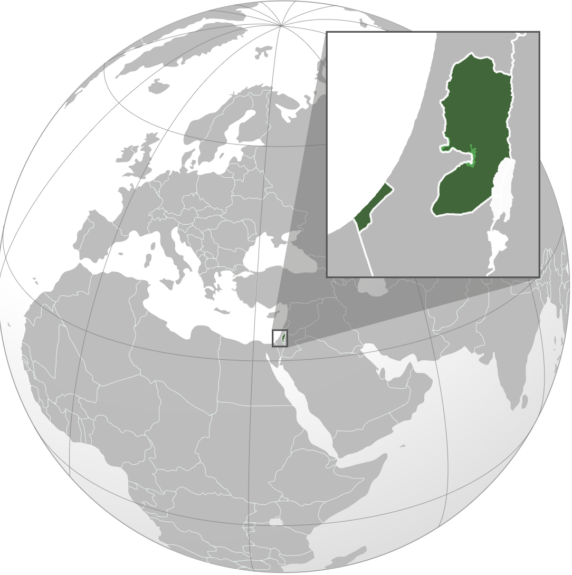
The situation is entirely different in the Gaza Strip compared with the West Bank.
These are 2 separate places that aren’t adjacent, with 2 separate governments, and 2 completely unique realities.
I’m not even going to talk about anything other than Gaza today, because that’s enough… and because that’s where the current war is taking place.
But if enough people are interested, I could do a part 2 to this article, since in addition to what’s close to Gaza, I’ve also explored from the West Bank to Jerusalem, from the Syrian border to the Dead Sea and from Tel Aviv to Haifa.
Basics of the recent history in Gaza
So Gaza is a small territory that is also bordered by Egypt and the Mediterranean Sea. There are over 2 million inhabitants in a territory smaller than the island of Montréal. It’s very densely populated.
Israel withdrew completely from Gaza in 2005, but has maintained a blockade (alongside Egypt) since 2007, in response to the election of Hamas.
Hamas rules Gaza but is classified as a terrorist group by Canada (and many others, such as the European Union).
Since then, there have been several attacks on Israelis and several military operations by Israel (2 things that also happened before for decades, just to be clear).
There were in fact 4 major armed conflicts between Israel and Gaza since Hamas’ election, including a very major one just 1 month before my trip (2009, 2012, 2014, 2021).
But despite that, what happened 4 Saturdays ago was Israel’s “September 11” or “Pearl Harbor” according to several experts, it was truly without precedent or comparison.
Background of my trip to Israel and Palestine in 2012-2013
I’ve been lucky enough to take part in Canadian delegations to explore different parts of the world, whether it was this summer in India, last year in Manitoba, before the pandemic in Senegal, and a few times in France before that.
My very first experience of this kind was in Israel and Palestine.
In the fall of 2012, I received an invitation to join a delegation of a dozen young Québec leaders to visit Israel and Palestine over the holiday season. Naturally, I said yes.

Spending Christmas in Jerusalem is an absolutely unique experience, even though I’m not at all religious. It wasn’t the Christian angle that was special at all, but rather the historical, cultural, and symbolic angle.
I want to mention that it was also even my very 1st time outside North America! I’m sure you can appreciate the culture shock and change of scenery I was lucky enough to experience!
I loved it and it definitely got me hooked on international travel (the best kind of travel)… but I too have long believed the very false myth that many people unfortunately believe: that travel is necessarily expensive. There’s literally nothing further from the truth of course, at least when you know how.
But then, in November 2012, Operation Pillar of Defense was launched by Israel in response to rocket attacks from Gaza, among other reasons.
As we always tell you whenever something unfortunate happens in the world, there’s no upside to reacting emotionally, impulsively, and irrationally. This is true of everything in life, by the way (a very basic personal development tip I offer you as a bonus).
So on November 21, about 1 month before our scheduled flight, a ceasefire was fortunately declared (fortunately for my trip but fortunately first and foremost for everyone involved there of course). So it’s a good thing we did not cancel anything!
Finally, I’d like to point out that the trip was organized and funded by the Centre for Israel and Jewish Affairs (CIJA) and was intended to educate the participants (who are not Jewish/Israeli and not as familiar with the situation) about the conflict and the region.
To be clear, in addition to several Israeli leaders from the political, diplomatic, academic, legal, journalistic, military, and other spheres, they also included meetings with Arab and Palestinian leaders too.
You know this if you follow us, I’m never shy about speaking my mind (a little too much for the tastes of some who don’t like hard-to-hear truths); I don’t like any bullshitting.
So I can honestly say that I found the program quite balanced and objective. But I’m still smart enough to admit that a hypothetical trip organized by Palestinians would have given a completely different perspective, of course!
My trip near the Gaza border
Firstly, I apologize for not taking notes of the exact locations nor taking beautiful photos nor a large quantity of photos: I had no idea that I would end up creating travel content in life.
I was just enjoying the moment, as I frankly wish I could still do on my current trips without having to think about photos.
So during our Israel/Palestine itinerary, we headed southwest, near the border with the Gaza Strip.
We went for a walk in Sderot, where we saw this rocket that testifies to the reality of being so close to Gaza: rockets launched by Hamas can easily get this far.
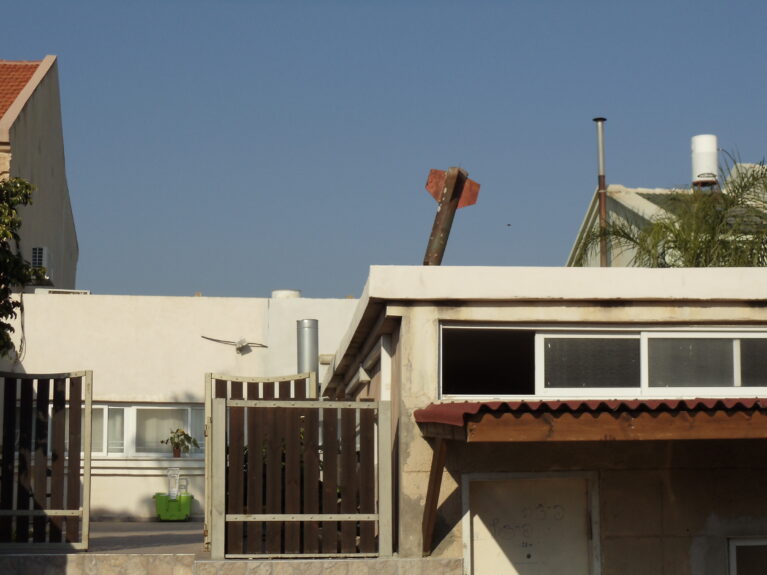
Sderot is where the recent Hamas attack took place (among other places).
It’s really very close to Gaza.
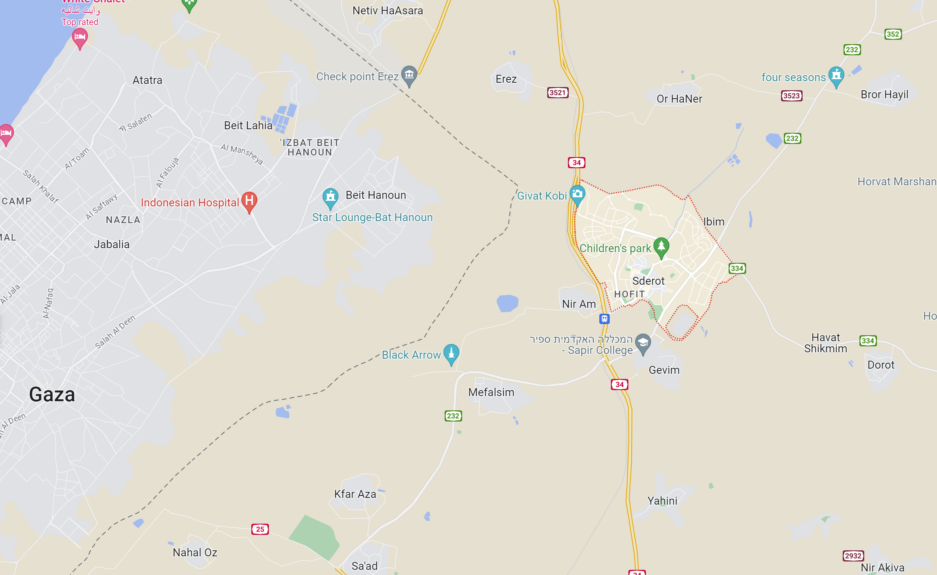
By the way, that’s one of the things you can really just understand by being there: everything is so close in Israel and Palestine.
It’s a reality that’s striking when you’re on the ground, the geography is extremely complex because everyone wants the same land obviously, but also the territories that the 2 sides currently have are so stuck together and in extreme proximity (not just around Gaza, I mean everywhere).
Sderot is what they call the 15-second zone, which is the worst that exists on Israeli territory: when Israel spots rockets launched from Gaza and activates the sirens, the inhabitants have just 15 seconds to get to their shelters.
That’s how fast it is. 15 seconds really isn’t long…
It’s part of their reality in Sderot. This is everyday life. People are used to dropping everything and going to protect themselves quickly, almost everyone has access to shelters at home or nearby.
One thing I remember was when someone in our group asked Moty, our delegation’s Israeli guide, why the Israelis were staying there despite the risks.
He answered with a question: Why do Canadians stay in Canada despite the risks of the brutal Canadian winter, which leads to more road accidents and other various deaths than just about anywhere else on the planet?
Because it’s home, just as Sderot is home for many Israelis. That’s why they stay there.
And someone in the group was skeptical of the comparison between rockets and winter, but we had looked up the statistics out and indeed one is much worse: winter and all that it brings actually kills far more people (in a normal year)!
It’s just a different kind of risk that we’re used to, just as the Israelis near Gaza are used to the risk of rockets.
The Iron Dome anti-rocket system and sirens are actually quite effective, he told us, so it’s more of an unpleasant inconvenience than a serious risk. Given that (relatively) few Israelis died from rocket attacks in recent years, it makes what happened last month even more jarring for them (and the failure of Israeli security measures even more shocking for Israelis).
We then went to a vantage point overlooking the buffer zone between Gaza and Israel and the security fence.
That’s the priceless advantage of taking this trip to Israel and Palestine to understand the situation, because there’s really nothing that compares to actually going where it all unfolds.
Next to the Israeli soldier in the cover photo of this article, Moty gave us some background on the Gaza blockade.
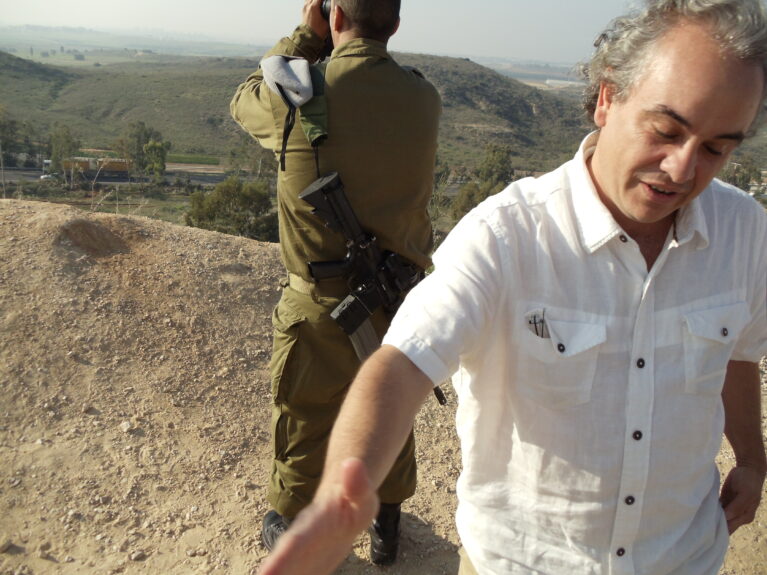
It was a bit foggy that day, but you can make out silhouettes of buildings in the distance.
That is Gaza.
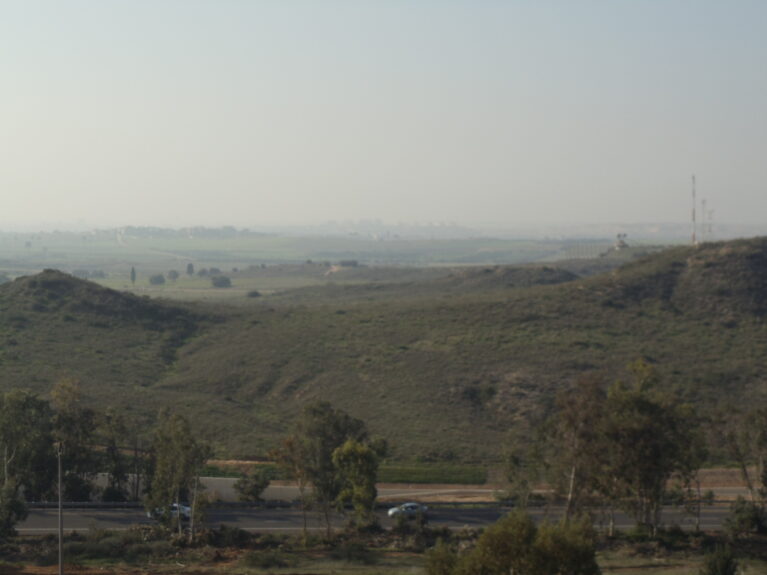
With the distance between the border and Israeli towns being so small, it really doesn’t give the Israelis much time to react to a ground/glider attack like the one last month.
But that’s as close as we got to Gaza on that trip.
As I said in the introduction, the situation in Gaza is completely different from the West Bank. So although we went to visit the Palestinian territories in the West Bank, going to Gaza wasn’t part of the itinerary at all unfortunately.
We spent most of the time in Israel in fact, but it still gave us an understanding of the conflict that’s hard to get without going there on the ground and having access to discussions with experts.
I’m obviously hoping for peace, because I’m always violently pro-peace. It shouldn’t be so complicated for the people of Gaza and the people of Israel to all live in peace side by side, but yet…
It’s just about the most complex situation in the world as far as I’m concerned. So I personally have little hope. I’m not pessimistic, just extremely realistic and rational.
It’s just too complex. Just look at the map of Jerusalem, the holy place of both the Jewish and Muslim religions.
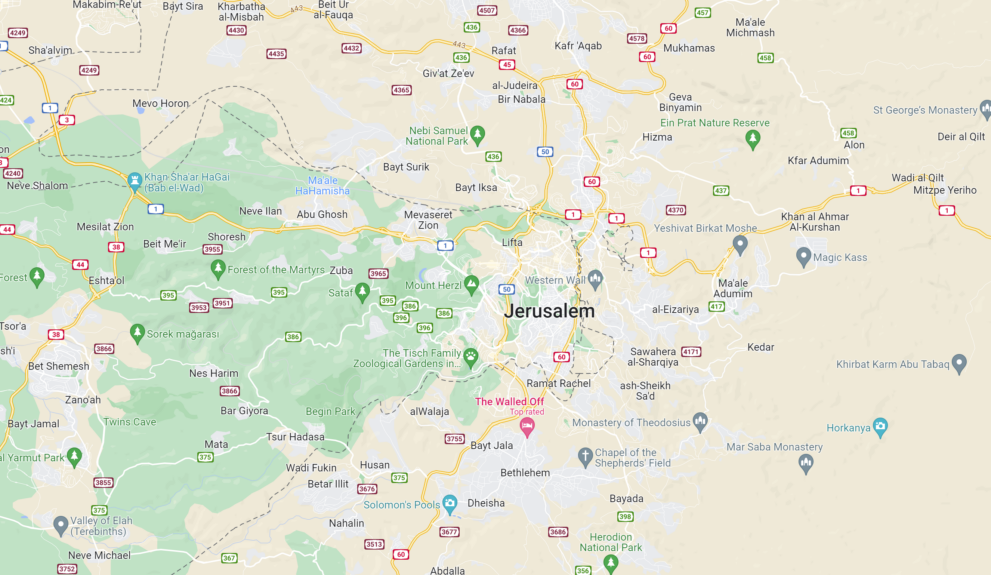
The city that Israel considers its capital is surrounded on 3 sides by Palestinian territory (and is also partly claimed by Palestine)…
It’s complicated.
Want to get more content about our trips?
Summary
Here’s my brief experience of the Gaza border and nearby towns during my rather unique trip to Israel and Palestine. It’s very different in terms of destination content, but I trust it gives you a perspective that few travelers have been able to get.
What would you like to know about my visit to Sderot, Israel, on the Gaza border? Tell us in the comments below.
See the deals we spot: Cheap flights
Explore awesome destinations: Travel inspiration
Learn pro tricks: Travel tips
Discover free travel: Travel rewards
Featured image: On the Gaza border (photo credit: Andrew D’Amours/Flytrippers)

